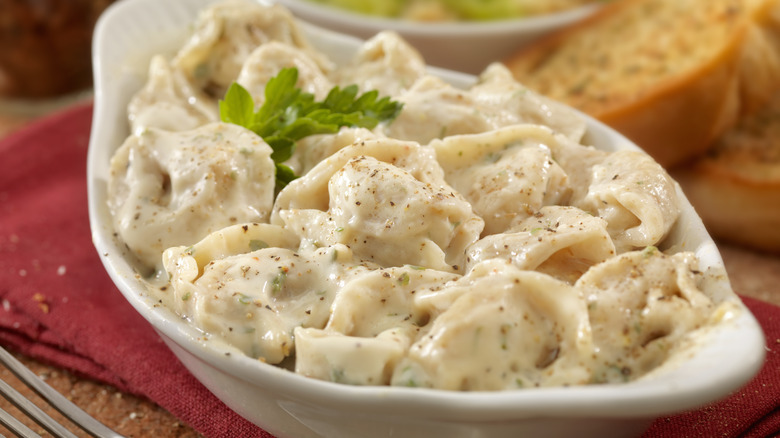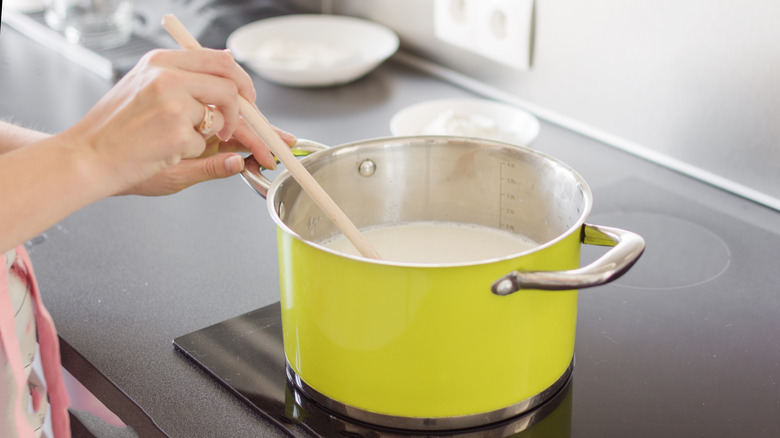Boil Your Pasta In Milk For Even Creamier Texture
If you've never experimented with boiling your pasta in a liquid other than water, you may be missing out. For instance, not only is it possible to cook your noodles directly in your sauce, but doing so can pay off with fewer dishes and less wait time. But sauce isn't the only option you can turn to — cooking your pasta in milk can give your dish a uniquely luscious, creamy texture. Mac and cheese is a prime example of a dish you can try this with, as the water-to-milk swap creates a more efficient cooking process with a richer sauce.
But making mac and cheese isn't the only occasion that calls for boiling noodles in milk. Feel free to use this technique for other pasta dishes as well to get richer and creamier noodles from the get-go, before you've even added any sauce. The starch from the pasta will thicken the milk as it boils, and you can save some of that starchy milk to add to your sauce — unlike when boiling with water, where all that starchy goodness typically gets poured down the drain.
How to boil noodles in milk
While there are clear advantages to boiling your noodles in milk, it's important to note that this method may not work for every pasta recipe. You'll want to choose a dish that has at least a partially creamy sauce, such as Alfredo, pink sauce (which is typically half tomato and half cream sauce), vodka sauce, a creamy lemon sauce, bechamel sauce, cacio e pepe, a blended squash sauce, or even carbonara. Where this method may not work? In a strictly tomato-based sauce like marinara or arrabbiata.
If you've chosen a recipe to try this with, there are a few things you'll want to keep in mind once you get started. Milk, unlike water, needs to be stirred frequently while bringing it to a boil to ensure it doesn't burn. You can try to prevent this by simmering your milk instead of boiling it, but keep in mind that cooking your pasta this way may take twice as long as if you used boiling water, so make sure to check on the status of your noodles often. Then when it's time to drain them, keep a little (or a lot) of the liquid to add to your sauce (remember all that starchy goodness?). You'll end up with such a rich, creamy pasta, that you may never go back to cooking your noodles in water.

